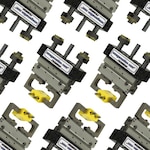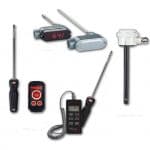 Thermo-Anemometers
Thermo-Anemometers DwyerOmega, Inc. offers many air velocity measuring products that use thermal or hot-wire sensors as the sensing element. There are fixed duct mount styles for continuous monitoring, such as the Air Velocity Transmitters, Series 641, and portable insertion styles for testing, such as the Thermo-Anemometer Test Instrument, Model 471B and the Thermo-Anemometer Probe, Series AP2.
Anemometers are instruments used to measure wind speed or air velocity in meteorology and aerodynamics. The name is derived from the Greek root Anemos, meaning wind. There are many anemometer sensor types with one of the most popular being thermo, or hot-wire, anemometers for HVAC air velocity monitoring. Thermo-anemometers use a sensor element that is heated up beyond the ambient temperature. Airflow moving past the sensor will have a cooling effect that is directly proportional to the flow velocity.
Hot wire anemometers come in three basic types: constant current, constant voltage, and constant temperature. All three types have circuits that are based on trying to maintain a specific variable during the cooling effect based on Ohm’s Law. Thermo-anemometers offer good low flow detection, fast response times, and high rangeability of measurements. They are omni-directional, making them good for turbulent flows and easier to use than pitot tubes, but are more fragile than pitot tubes.
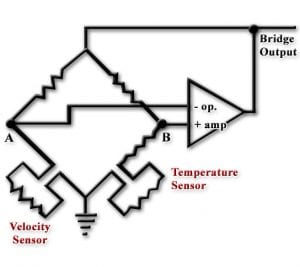 Thermo-Anemometer Air Velocity Sensors
Thermo-Anemometer Air Velocity Sensors 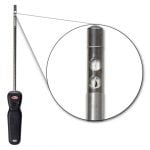 Probe Style Sensor
Probe Style Sensor Usually, a probe style sensor is made for insertion into ducts and pipes. For constant temperature thermo-anemometers, two temperature sensors are installed at the end of the probe, typically resistance temperature detectors (RTDs). One RTD measures the ambient temperature as a reference. The second RTD is continuously maintained at a constant temperature above ambient. The higher the air velocity, the more current is required to maintain the second RTD's temperature. Based on the current usage, the air velocity is calculated.
Like a pitot tube, thermo-anemometers are a single point sensing device that requires being in the center of the velocity profile or the use of traverse readings for accurate measurements.
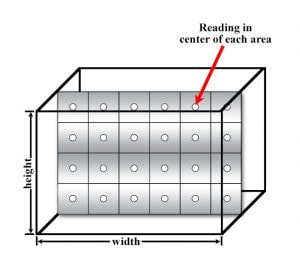 Traverse Readings
Traverse Readings

